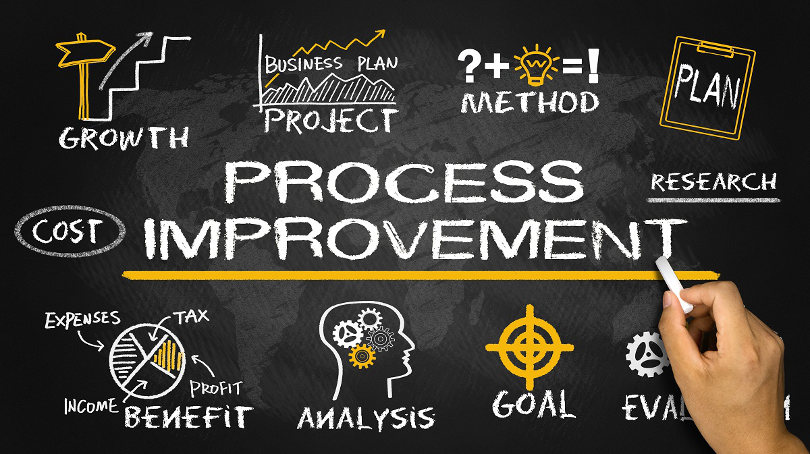Dejana Marich knows that the most effective way to boost profits and overall performance is to optimize business processes whenever possible.
Process improvement must not be confused with full automation and indiscriminate spending on the latest technology. Most importantly, process improvement does not mean analyzing the current process with a fixed mindset. In fact, it may require a fresh set of eyes to help identify opportunities to improve and capture significant savings.

Using Gap Analysis
Gap analysis is a useful method for identifying the distance between the current and goal states.
When consulting, Dejana seeks to provide a fresh perspective as she examines where process breakdowns or opportunities do, and can, occur. With 20 years of industry expertise, Dejana’s consultations use gap analysis to establish goals, identify the proximity of current performance to those goals, and help make critical decisions on how to close the identified gaps and meet those goals as soon as possible.
Implementing Process Improvement
When it comes to process improvement, businesses must identify key process points that impede the workflow. Per the Theory of Constraints (TOC), those bottlenecks ultimately set the pace for the entire process.
Upon pinpointing the bottlenecks, process redesign experts like Dejana Marich can assist organizations with finding ways to “elevate the systems bottlenecks” (The Goal by Eliyahu Goldratt).
Workflow Analysis
Identifying gaps entails combing through the workflow process and finding areas in which productivity is constricted. A careful workflow analysis often reveals a number of different points where inefficiency can wreak havoc. These are the points in the process where tasks tend to be backed up and where work quality is subpar.
Data Analysis
Data analysis is a critical piece of business process redesign (BPR). To really understand how and why these constraints exist, organizations need more detailed information. Without the right data to inform decision makers, it will be very difficult to properly address constraints and identify unapparent bottlenecks in the workflow.

Technology, Automation & Integration
We are living in the age of digital Darwinism, in which industries are being disrupted by AI and new technologies are evolving faster than we can adapt to them. In some cases, the most obvious solution for elevating a constraint is to incorporate new technology and automation tools.
For many businesses, system and process implementation with full automation tools is a long-term process in and of itself, with many difficult decisions and considerations, such as whether to acquire new skill sets or retrain the workforce. However, there are many new, relatively inexpensive technologies that are far less disruptive to the status quo. Simply supplying certain employees with smartphone devices or providing shared computer tablets to decentralized manufacturing or food service operating units may effectively enable operational efficiencies and enhance the BPR.
Carefully placed technological advancements can transform a mediocre process into an extremely efficient one overnight.
As customers continue to demand faster, better, and cheaper business models, companies are faced with the opportunity to leap ahead on innovation and profitability in this era of digital disruption. By effectively incorporating appropriate technologies, these companies can create a strong competitive advantage by reconceptualizing their entire models and organizing within the new digitalized, AI-driven frameworks.
Amazon is a classic example of an organization that secured its competitive advantage through the creation of a novel business model. Its AI chatbot, Alexa, is not only used to assist with customer service inquires but has also become a revenue generator by placing product orders for Amazon, as well as other companies (for example, Alexa can order a pizza from Domino’s). Such implementations pose a set of unique challenges and risks that require careful considerations.
As occasionally happens, businesses are happy to incorporate new technologies quickly but ultimately find that a number of these process-optimizing add-ons fail to talk to each other. The new constraint becomes a lack of integration among software, equipment, and teams. In such instances, Dejana Marich advises that the solution is to either find new technology that requires a minimal number of add-ons and/or integrates well with leading technologies and the existing processes or hire a third party to carefully integrate the technologies.
Often, organizations end up using a hybrid approach, while simultaneously guiding their employees to effectively problem-solve across departmental lines.

Takeaway
In summary, Dejana Marich concludes that though different approaches work for different businesses, there are universal opportunities for improvements, from fine-tuning existing processes, teams, or technologies to more complex approaches, such as reimagining entire business models and processes around AI-driven frameworks.
Companies should consider what strategy makes most sense for their business and within which segment. First, they should consider what their core business is about and if more complex investments offer strong strategic rationale and economic value. In addition, cultural fit should also be considered. While the AI-chatbot model may work extremely well for companies whose core business is logistics and online commerce, like Amazon, it may not provide any strategic and economic rationale for a different type of business, such as a gas station.







